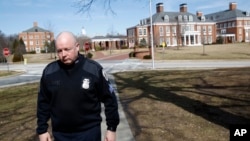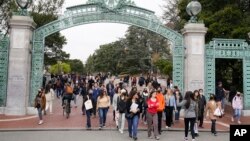Student Union
Number of Chinese Students in US Grows; More Undergraduates and Intensive English Learners
There's a nifty "Fast Facts" PDF if you want to check out some of the trends yourself. Here's what we found interesting:
1) The number of international students in the United States increased by 5% in 2010/2011.
2) Once again, that growth comes largely from China, which had a 23% increase in international students.
3) Other major increases were from Saudi Arabia (up by 43.6%), Iran (up by 18.9%), and Vietnam (up by 13.5%). That moved Iran into the top 25 places of origin, placing it at spot #22.
4) The number of Indian students actually decreased by 1%, apparently falling for the first time in 5 years.
5) Last year there were about 20,000 more international graduate students than undergraduates. This year that gap has narrowed to just about 5,000. China had 43% more undergraduate students this year.
The proportion of undergraduate to graduate students has fluctuated over the past decade – in 2000/2001 there were more undergraduate than graduate international students, but since then it has skewed the opposite direction.
6) The total number of international students in non-degree programs was up 8%, and in intensive English programs alone increased 24%.
7) Business/management is still the top field studied, and continues to grow. Engineering, math/computer science, life sciences, social sciences, fine arts and health all attracted more international students, while education, humanities and agriculture attracted less.
See all News Updates of the Day
Universities in Middle East building research relationships with China

As China bolsters research relationships with universities in the Middle East, the United States has taken notice – especially when that research involves artificial intelligence.
Reporting for University World News, Yojana Sharma has the story. (March 2024)
Tips for staying safe while studying in the US

Recent news events have raised safety concerns among some international students studying in the United States.
Adarsh Khandelwal, writing in the India Times, has tips for staying safe from the moment you arrive until the day you complete your studies. (March 2024)
Some colleges are making digital literacy classes mandatory

A 2019 study by Stanford found that most college students can’t tell the difference between real and fake news articles. Amid rampant online disinformation, and the threat of AI-generated images, some schools are making students learn “digital literacy” to graduate.
Lauren Coffeey reports for Inside Higher Ed. (March 2024)
With federal student aid delays, students aren’t sure what college will cost

The U.S. Department of Education’s federal student aid form (FAFSA) experienced serious glitches and delays this year.
Now, many students have been admitted to college, but don’t know how much money they’ll need to attend.
Read the story from Susan Svrluga and Danielle Douglas-Gabriel for The Washington Post. (March 2024)
Senator draws attention to universities that haven’t returned remains

More than 70 U.S. universities continue to hold human remains taken from Native American burial sites, although those remains were supposed to be returned 30 years ago.
Jennifer Bendery writes in Huffington Post that one senator has been using his position in an attempt to shame universities into returning remains and artifacts. (April 2024)






